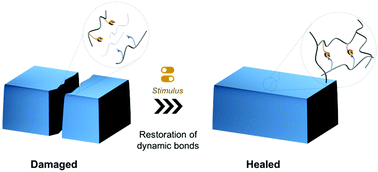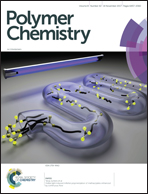Stimuli responsive self-healing polymers: gels, elastomers and membranes
Abstract
In recent years, the development of responsive polymers has expanded significantly owing to the constant development of new chemistries and controlled polymerization methods, which allow for the synthesis of complex and well-defined polymer architectures with predictable structure-to-function behaviour. These polymers exhibit multifarious changes of their properties by the application of physicochemical stimuli, be these reversible sol–gel transformations, hydrophilic–hydrophobic transitions, shape and volume changes, or assembly–disassembly ordering. The coupling of these responsive properties with suitable chemistries has generated novel polymeric materials with on-demand healing properties that can be precisely modulated and fine-tuned. In this review article, we discuss the interplay of key chemical reactions, which (usually) take place on crosslink points or on structural elements of polymeric materials with responsive modalities that drive the healing/remending mechanisms in a highly controllable manner. We examine representative emerging examples of bulk healable polymers in the form of polymer solids (elastomers, rigid polymers and hydrogels) and membranes that are designed for various uses in biomaterials science, bioelectronics, sensors, actuators and coating technologies, and analyse their potential for real-world applications.



 Please wait while we load your content...
Please wait while we load your content...